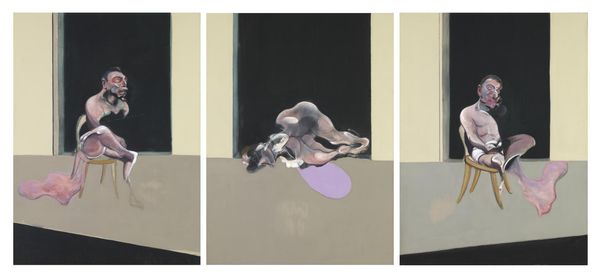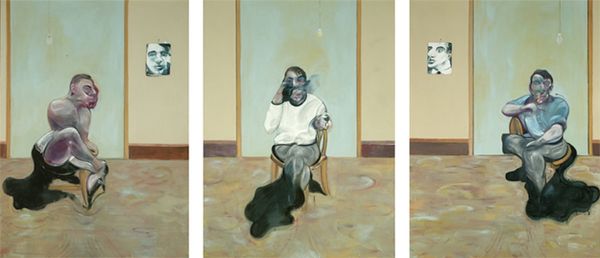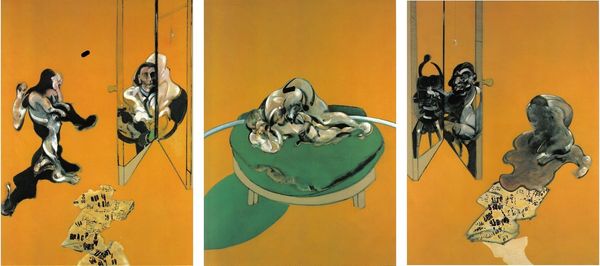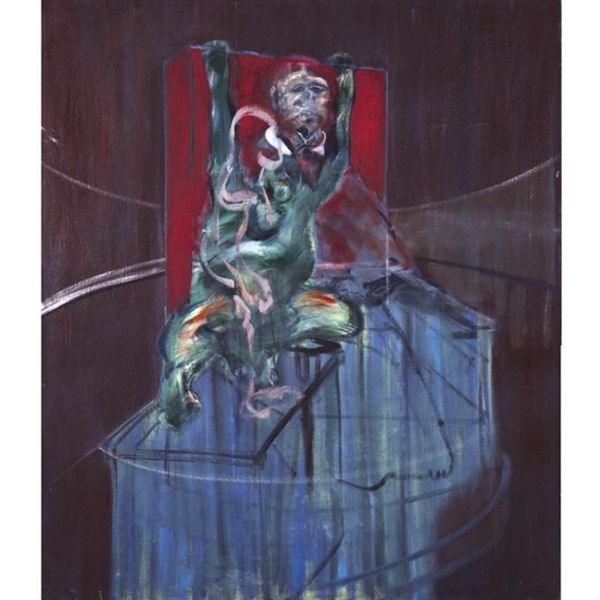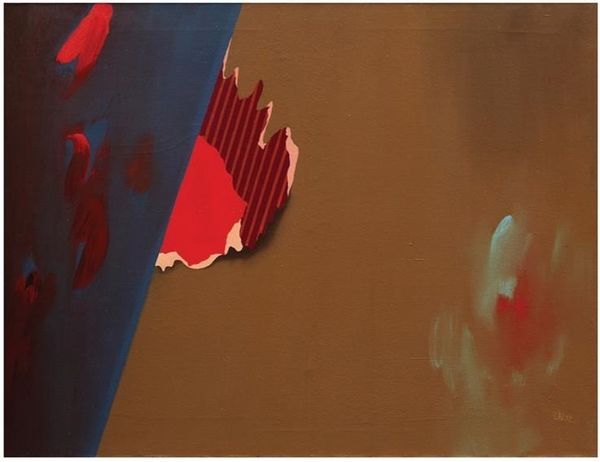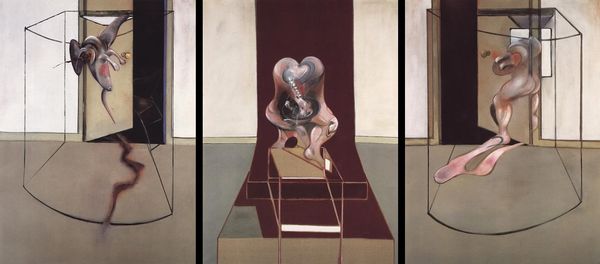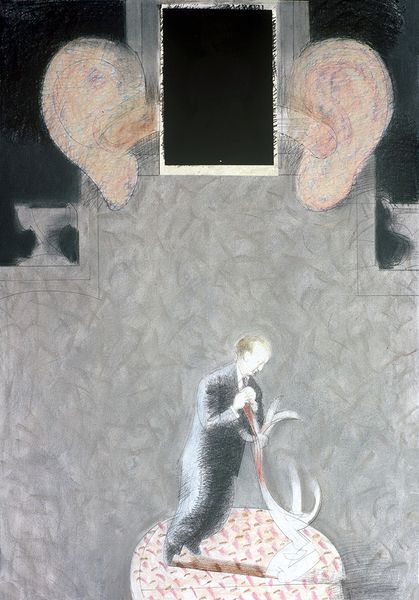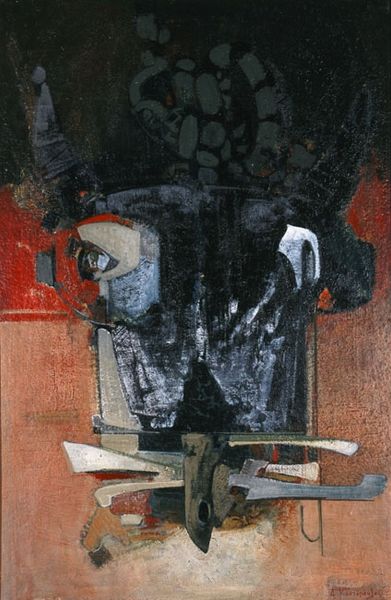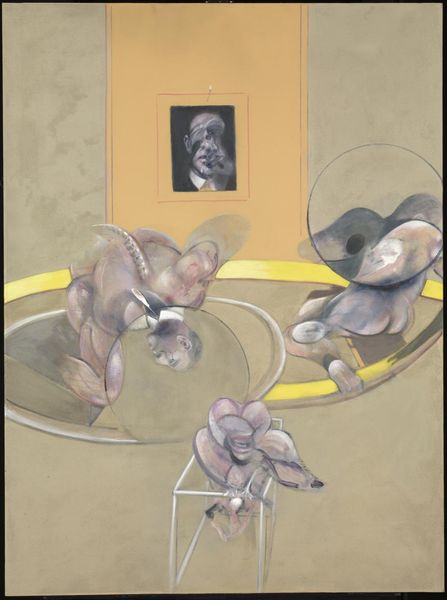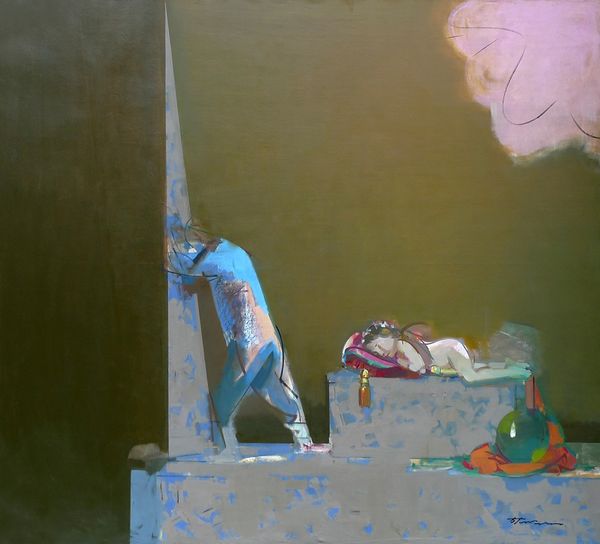
Copyright: Francis Bacon,Fair Use
Editor: This is Francis Bacon's "Triptych, May–June 1973," created with oil paint. It's a pretty unsettling set of portraits, wouldn't you say? What's your interpretation of this work? Curator: Unsettling is an apt descriptor. Bacon, throughout his career, was interested in portraying the human condition in all its messy, visceral truth. Notice the raw, almost brutal, depiction of the figure – contorted, vulnerable, even grotesque. Consider this within the context of the post-war era. What societal anxieties do you think Bacon might be grappling with? Editor: I see it as an exploration of existential dread and the body as a site of suffering. The claustrophobic setting really heightens the sense of unease, doesn't it? Curator: Precisely. The framing creates a sense of entrapment, almost as if we're peering into a private, painful moment. But also think about the social taboos around portraying the body in this way. What kind of statement do you think Bacon is making about visibility and representation? Editor: I hadn't considered that specifically. It feels like he's confronting us with the uncomfortable realities of the physical self, the parts of ourselves we often try to hide or deny. Curator: And who is allowed to be visibile, and how? Think about class, sexuality, gender. Bacon himself navigated a world rife with societal restrictions. Understanding his lived experience informs how we read his visual language. Do you feel your understanding of the piece has shifted? Editor: Definitely. Seeing it as a challenge to conventional representations of identity and the body, that's powerful. It makes the work even more compelling. Curator: Art is powerful! Let’s find another challenging artist.
Comments
No comments
Be the first to comment and join the conversation on the ultimate creative platform.
